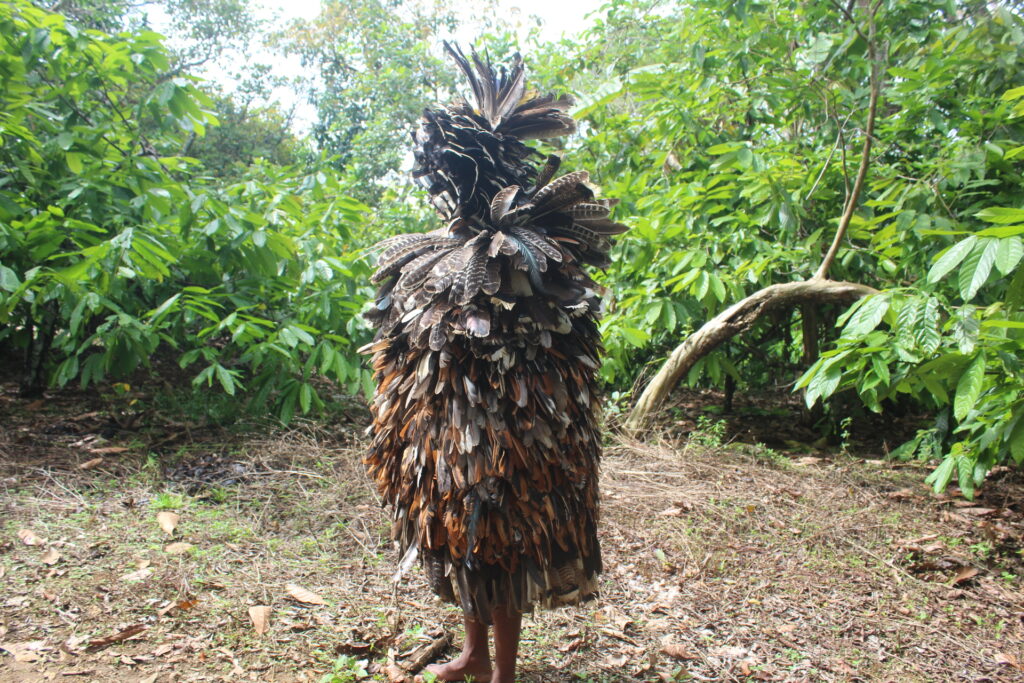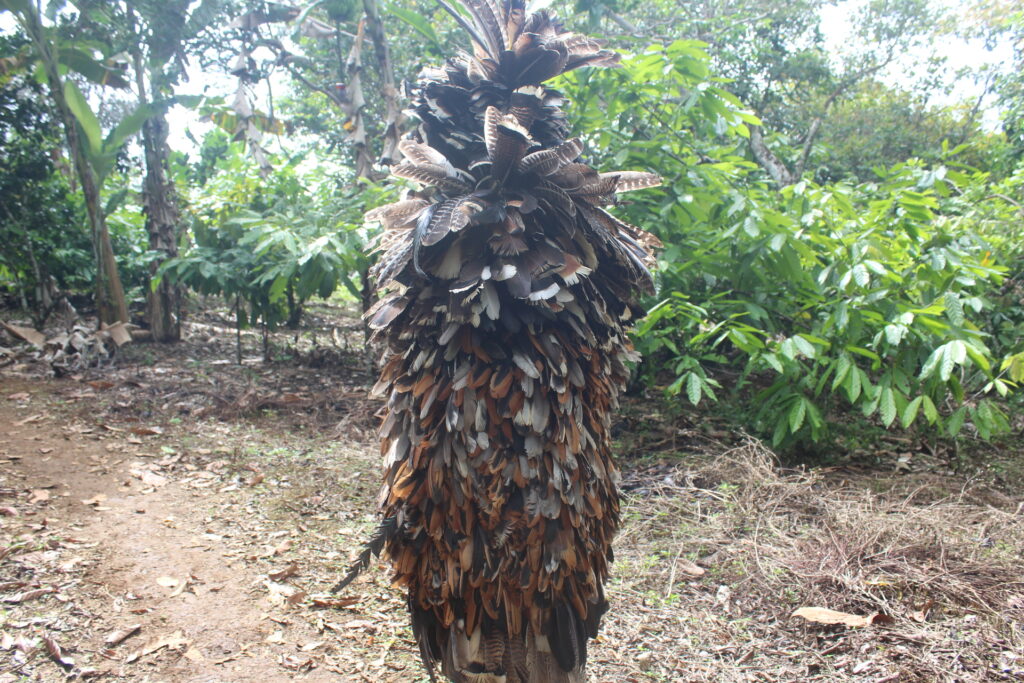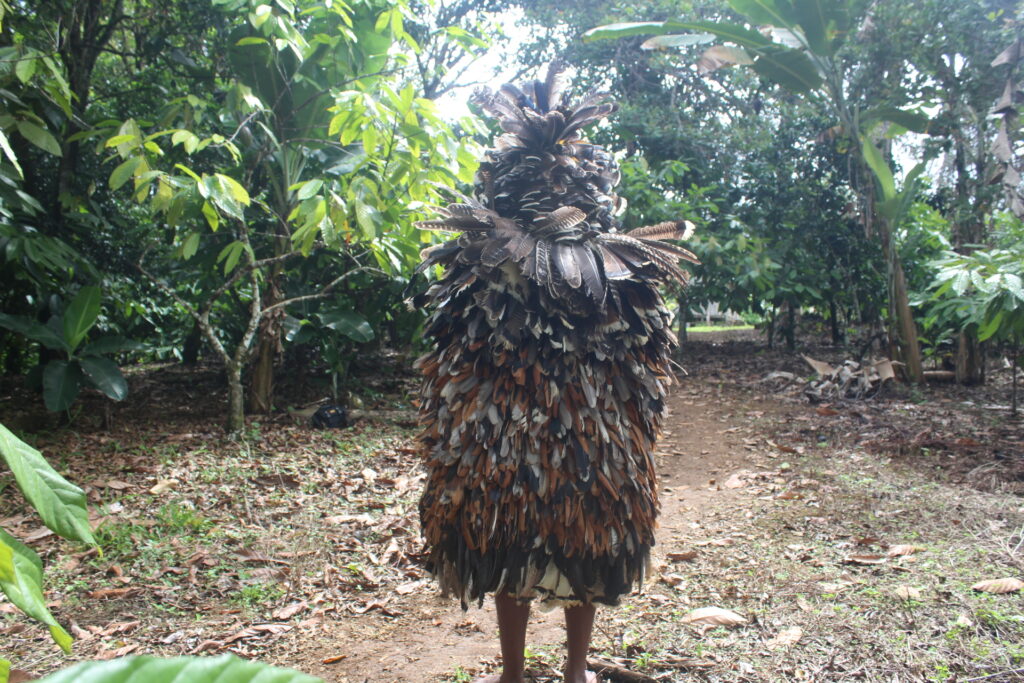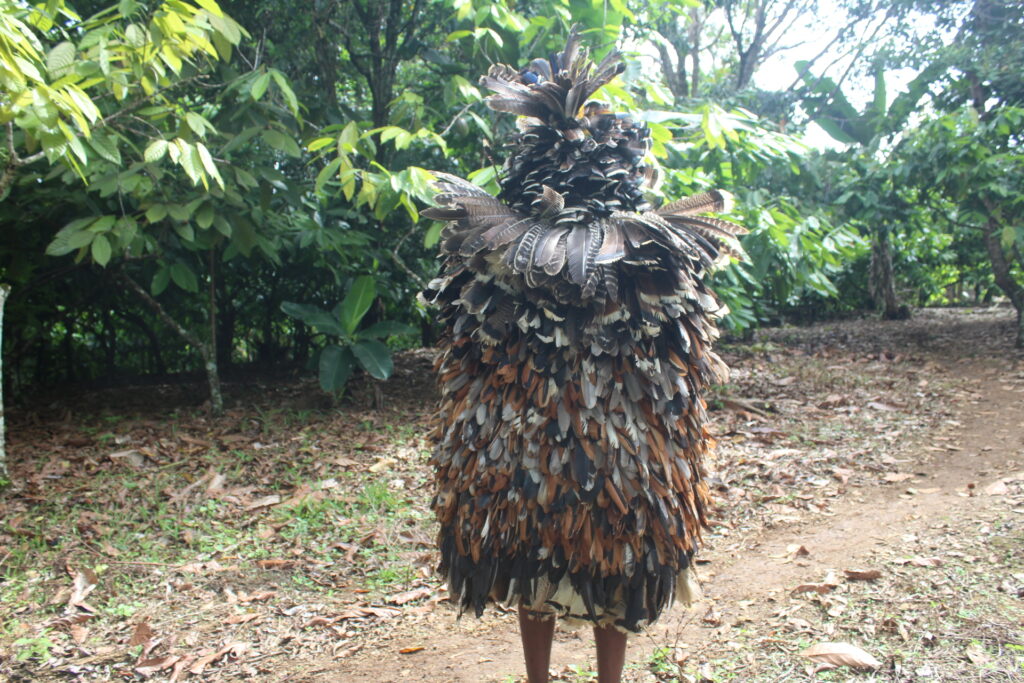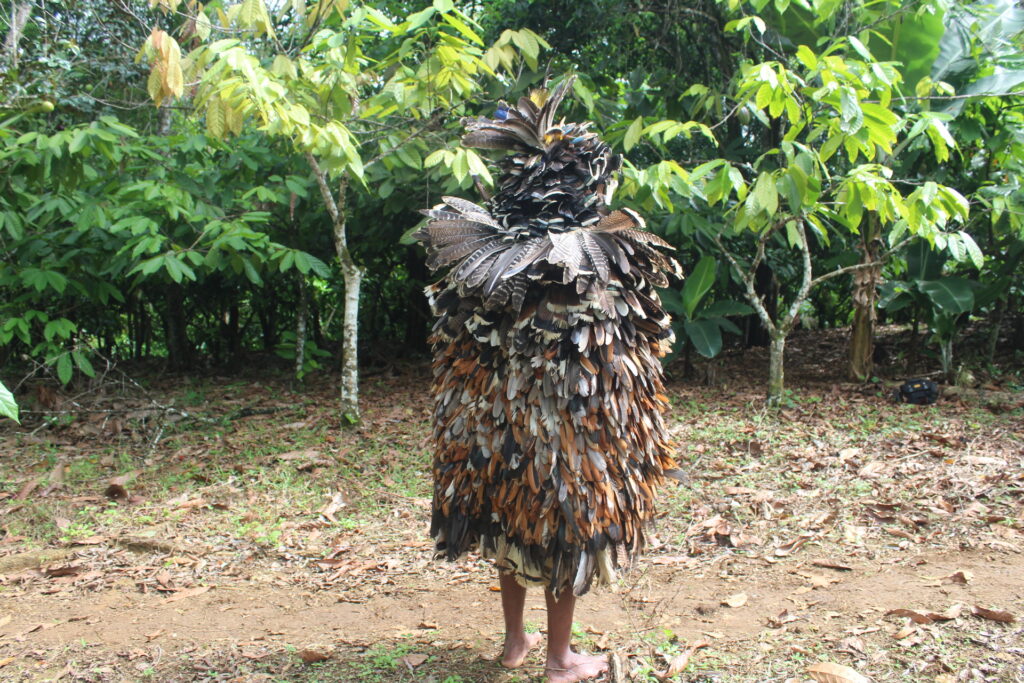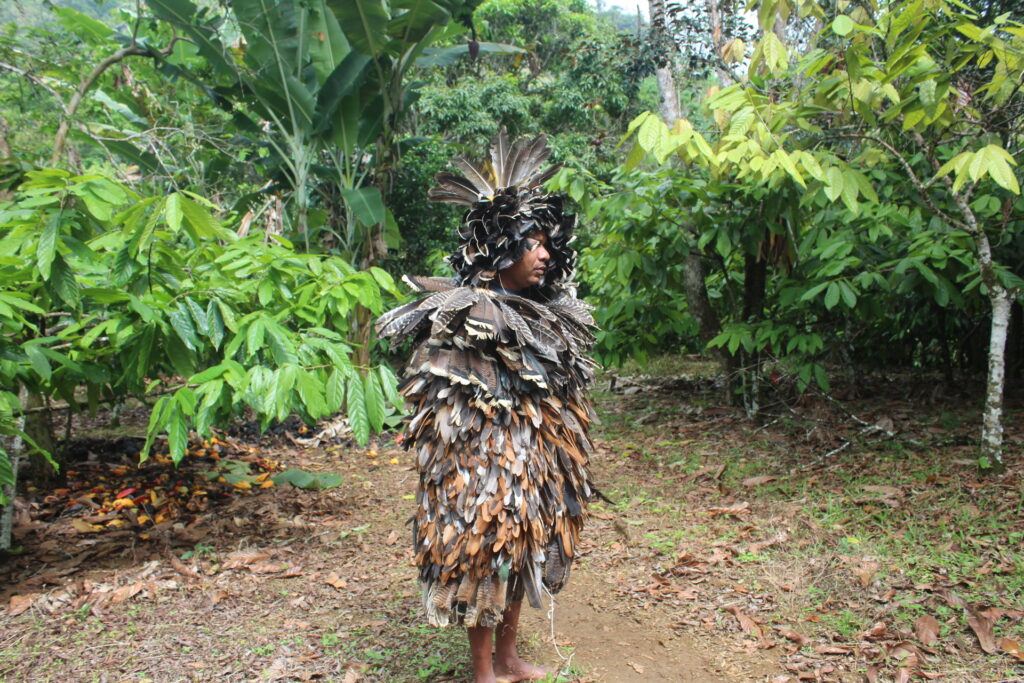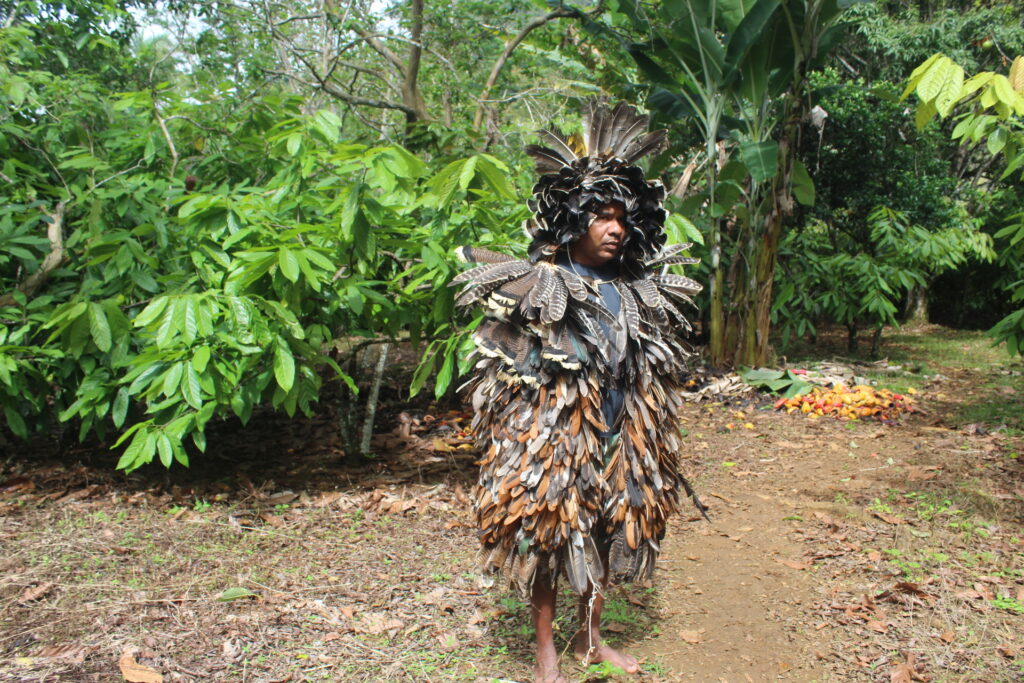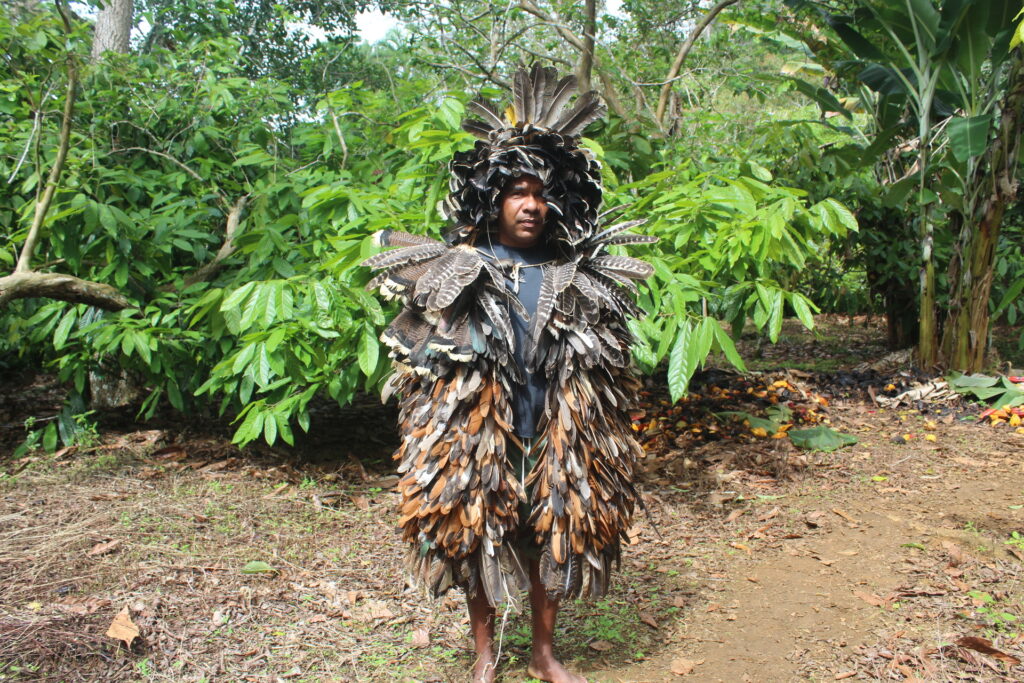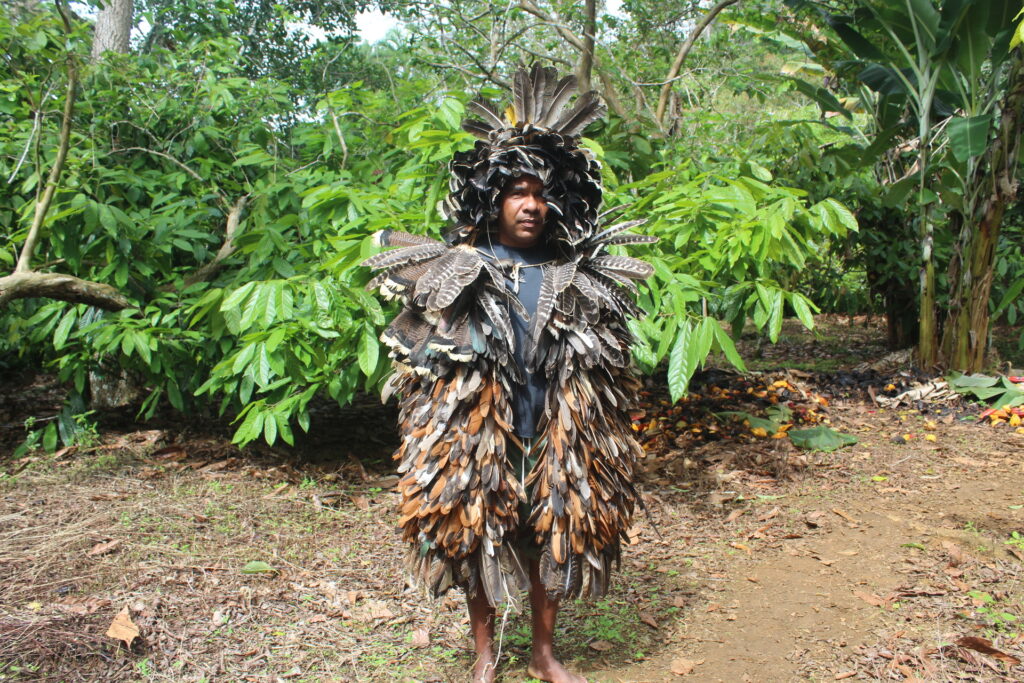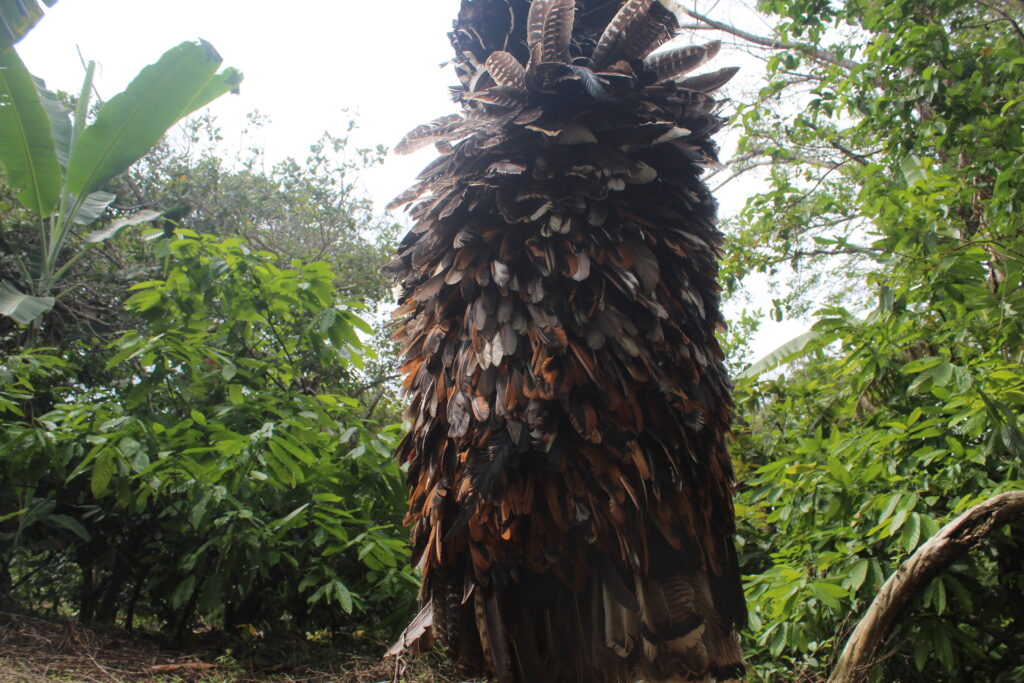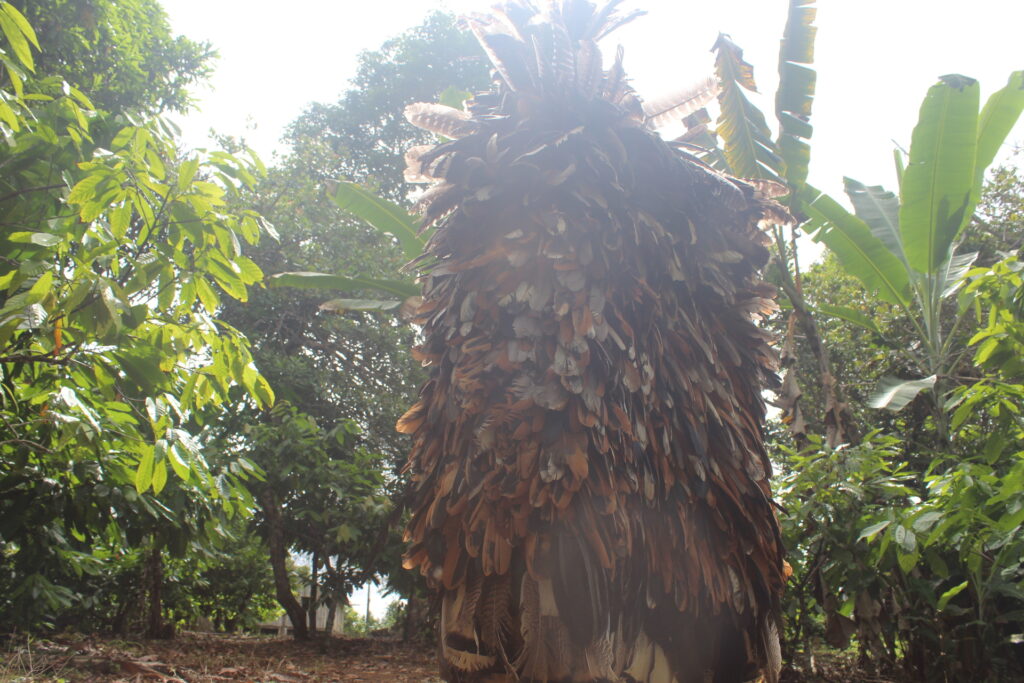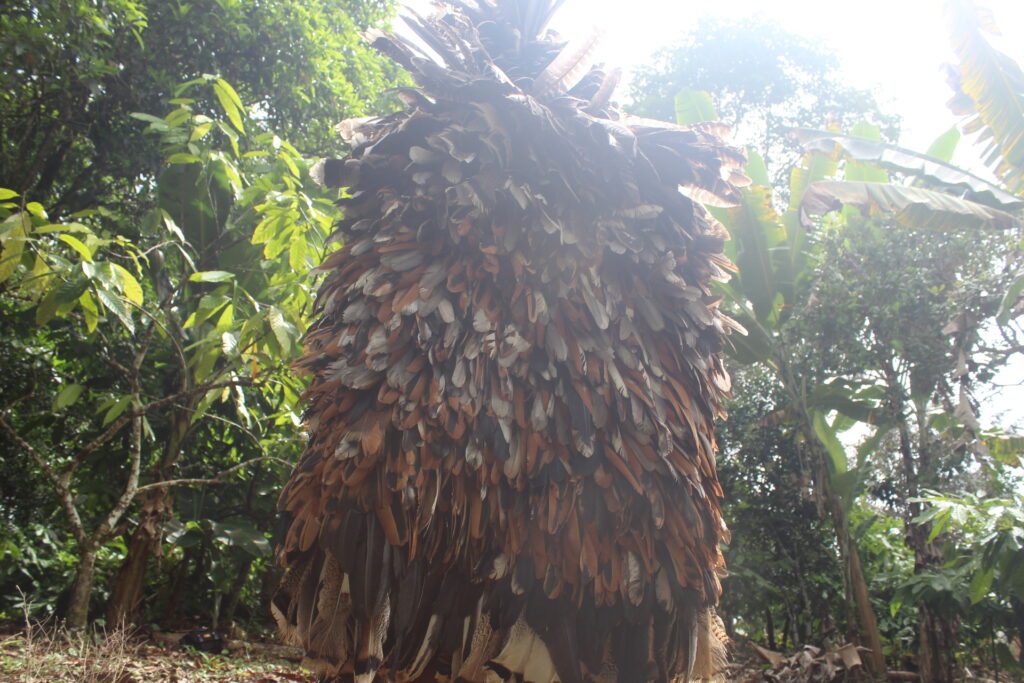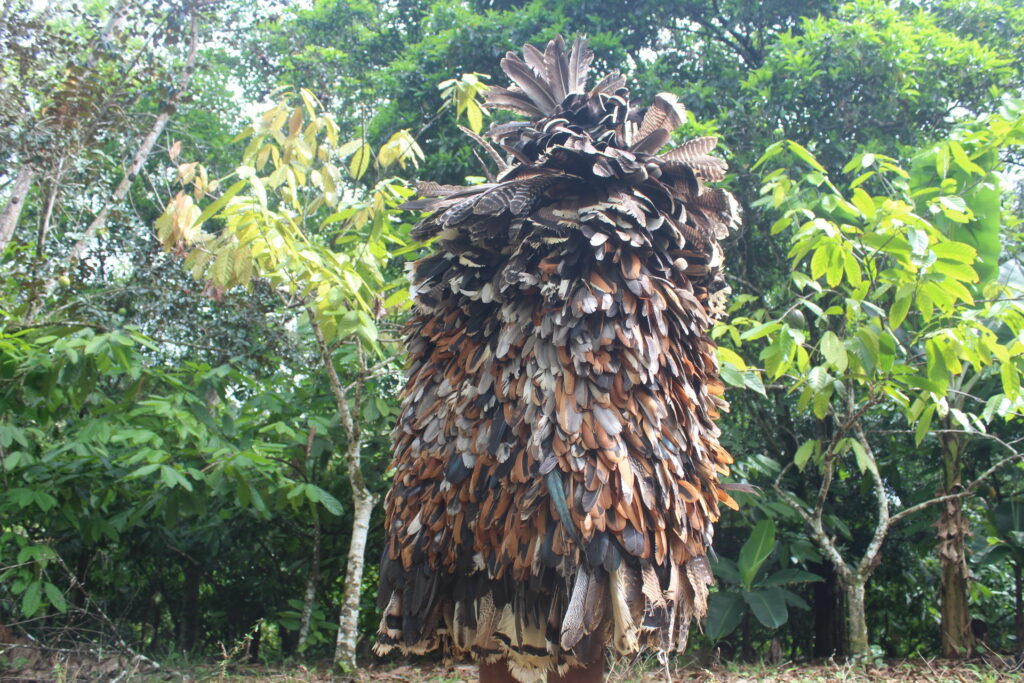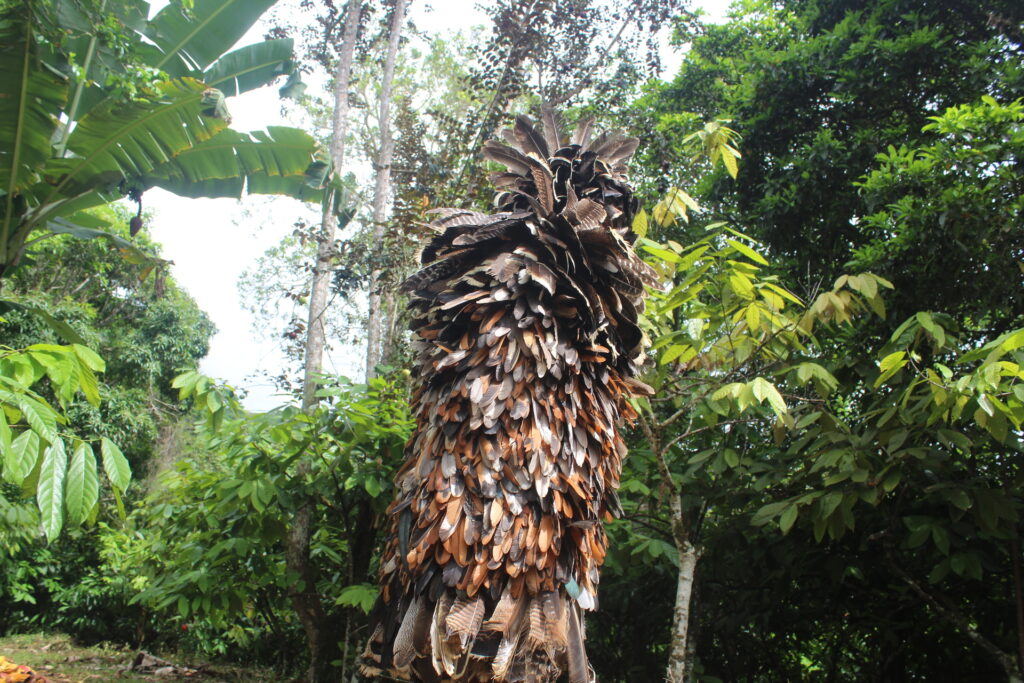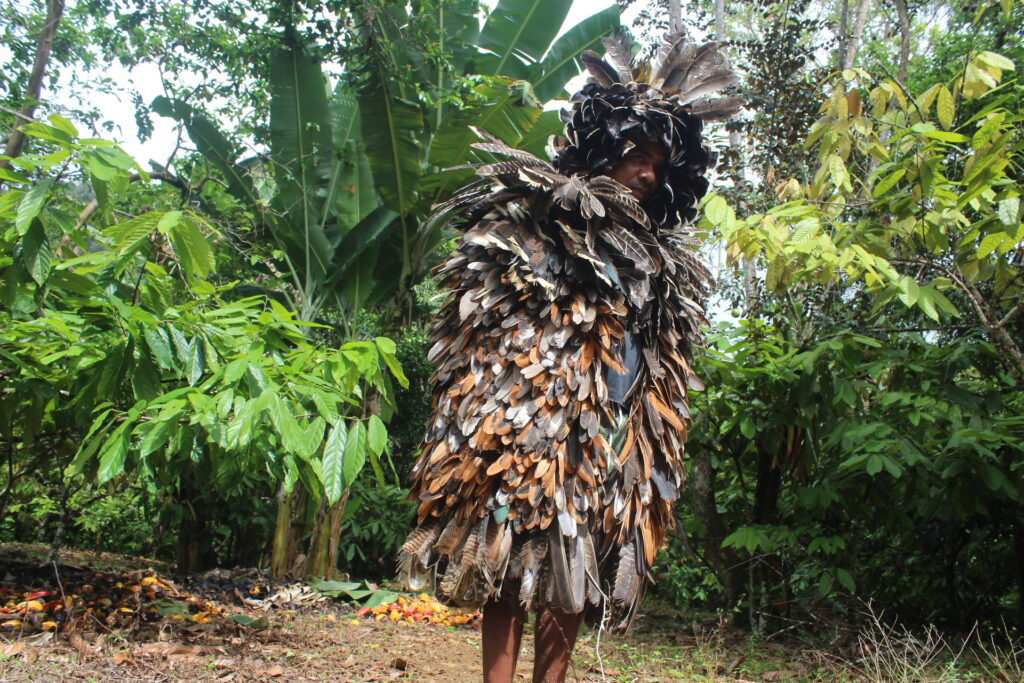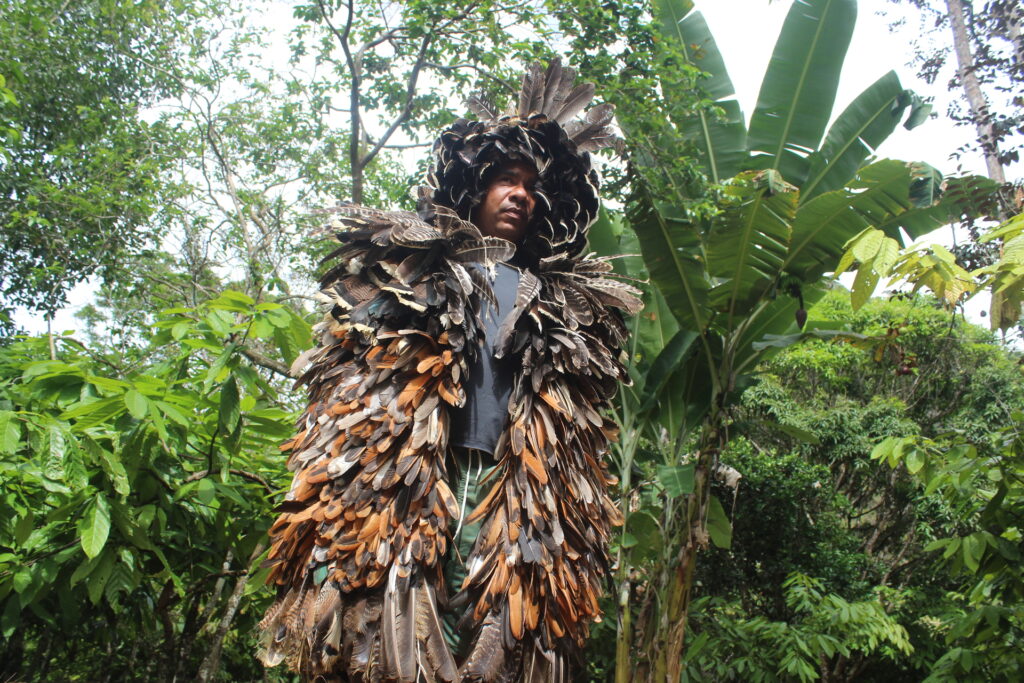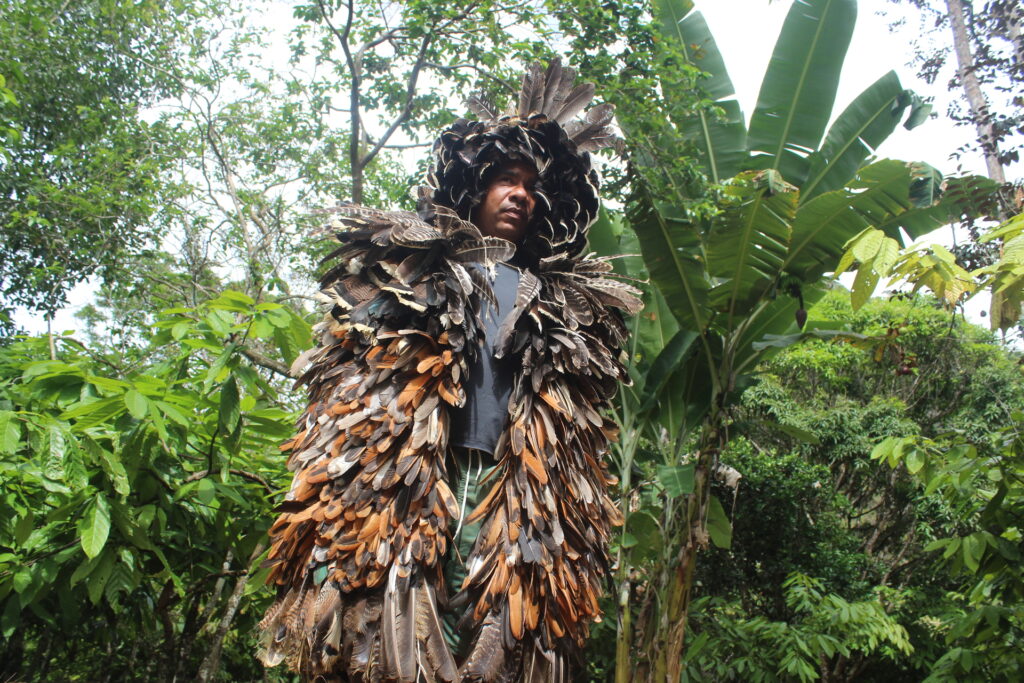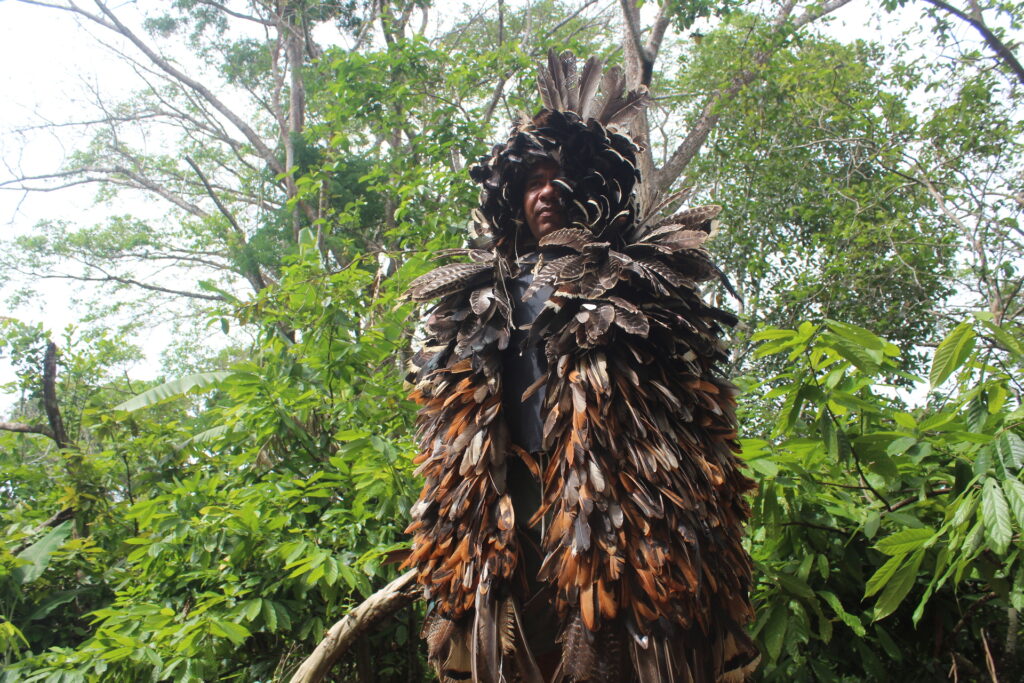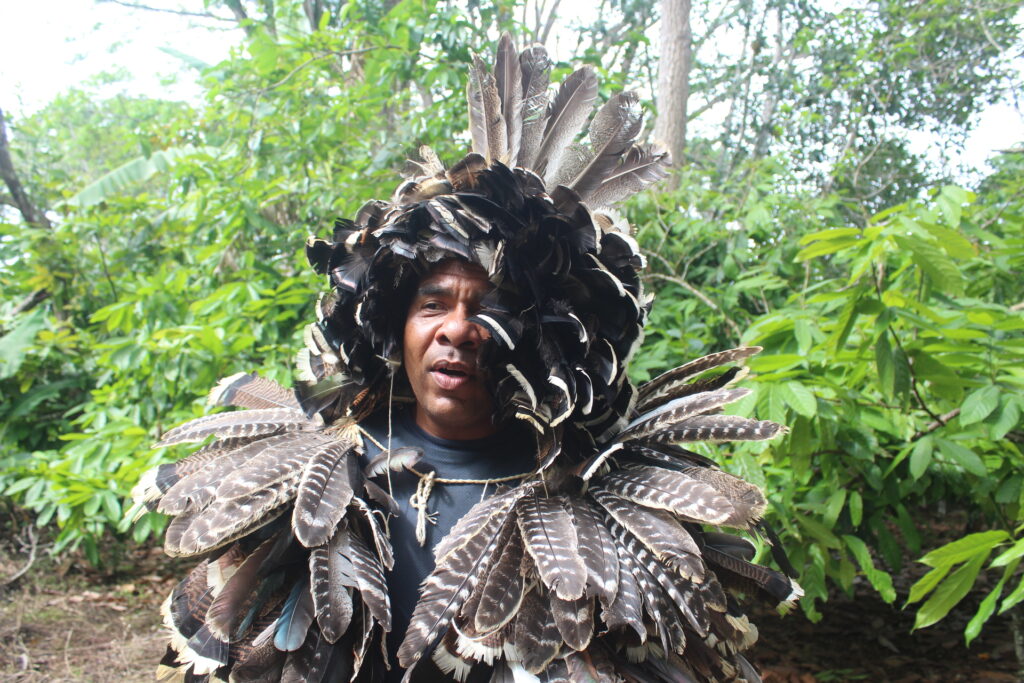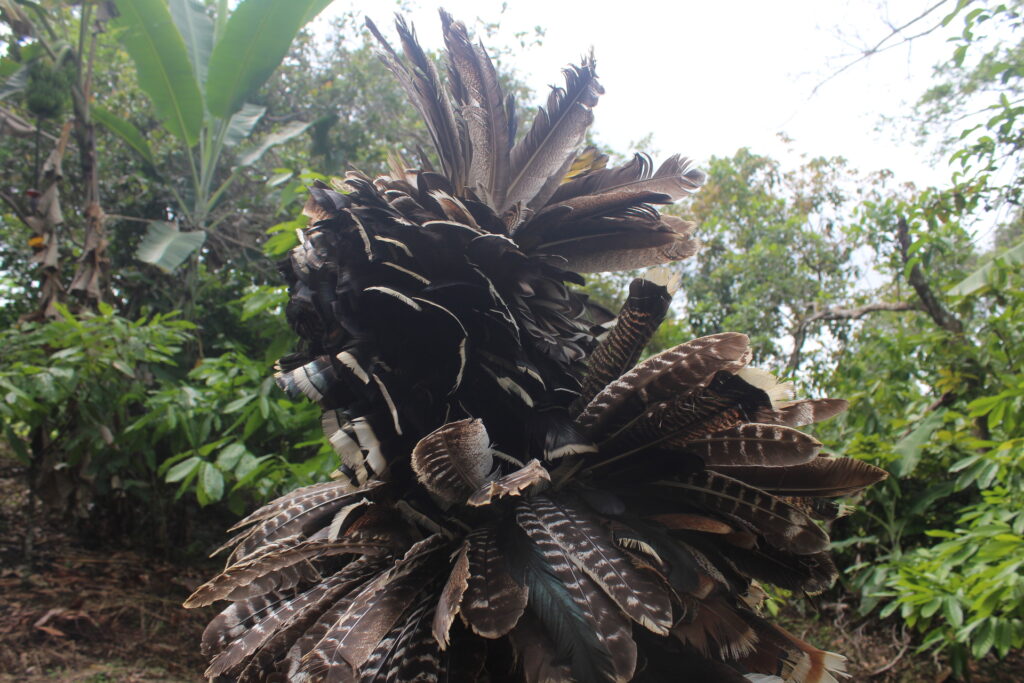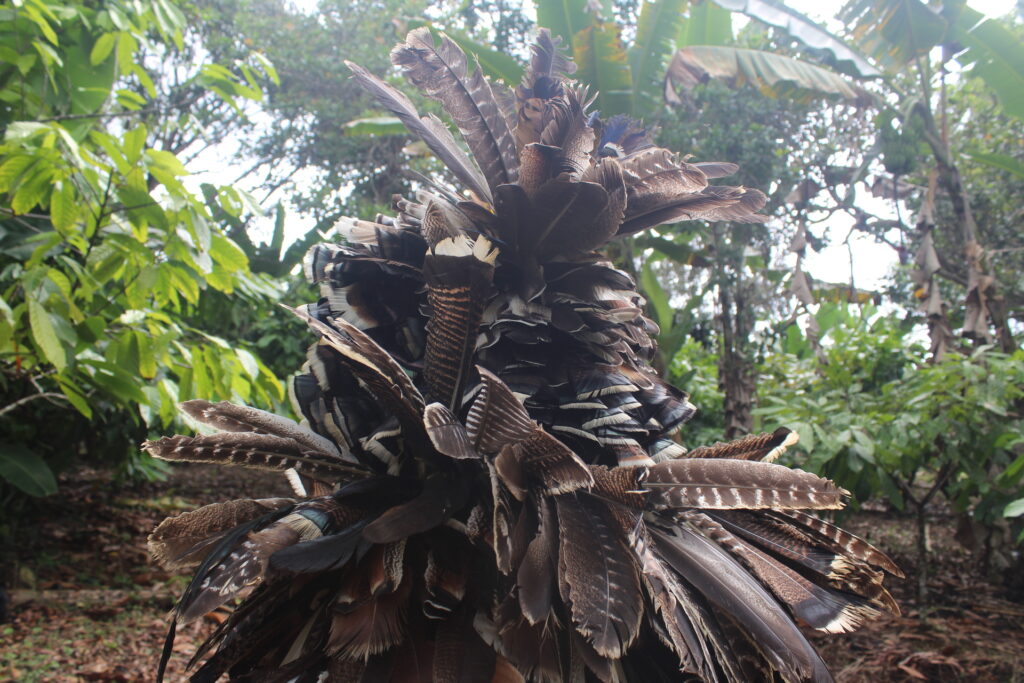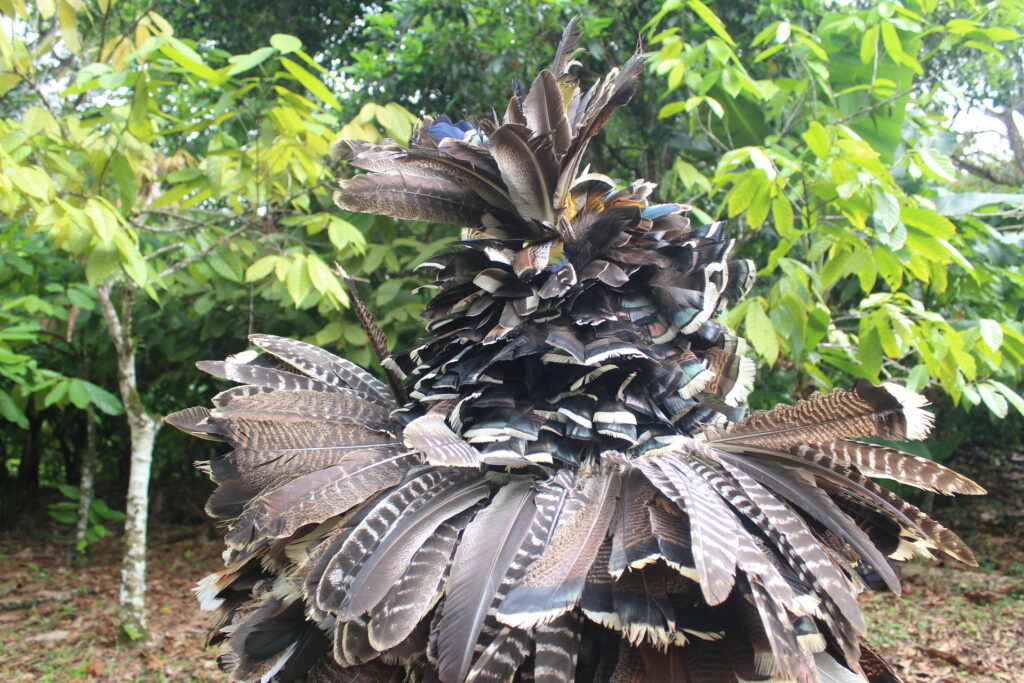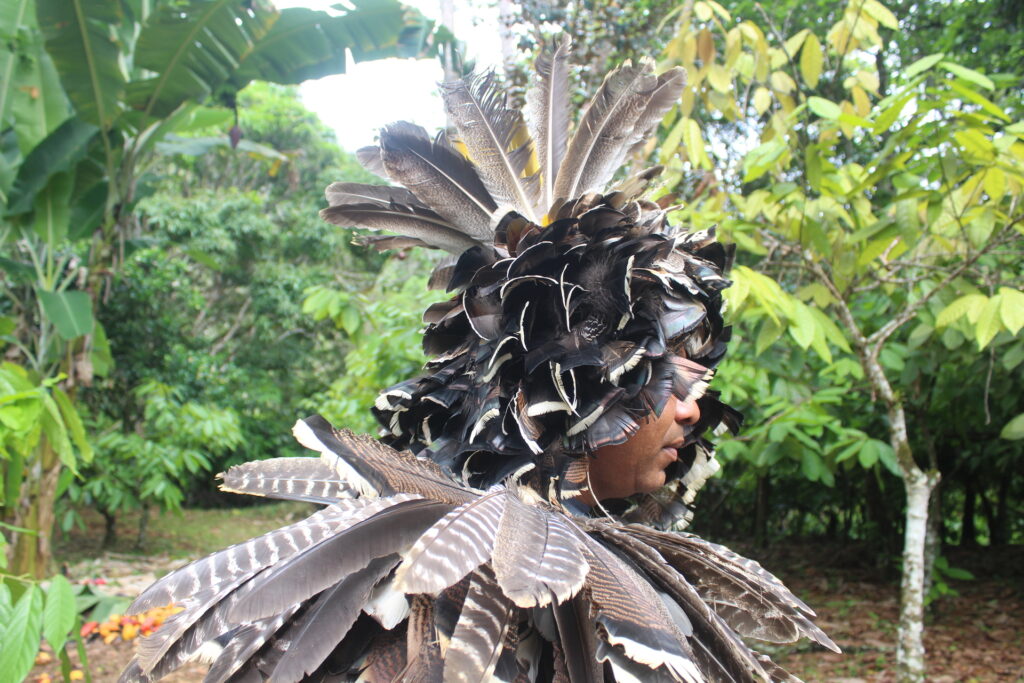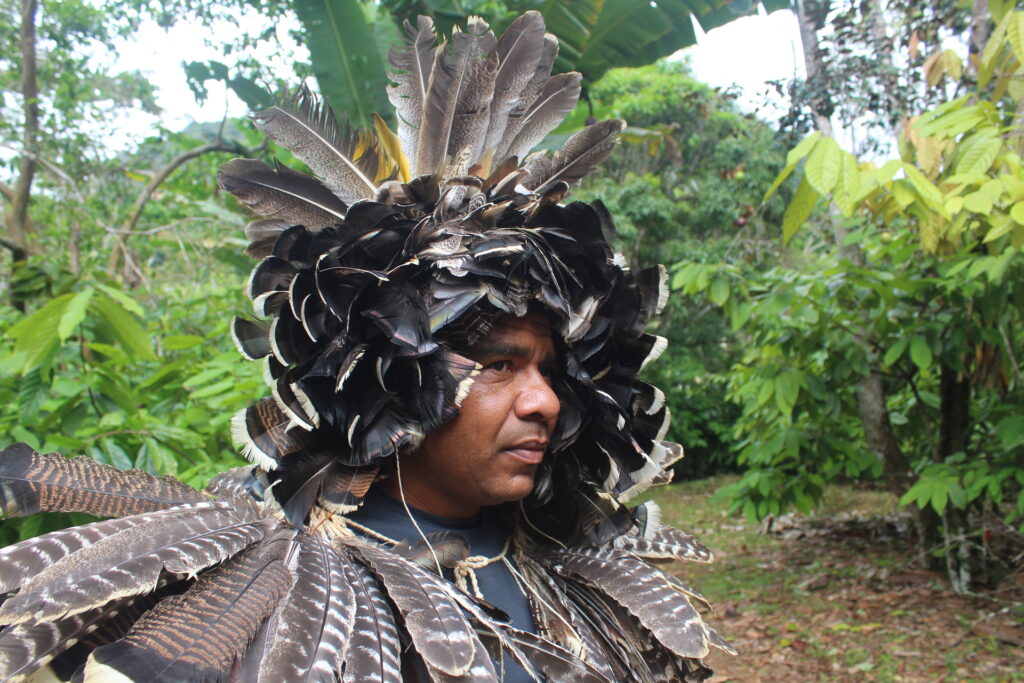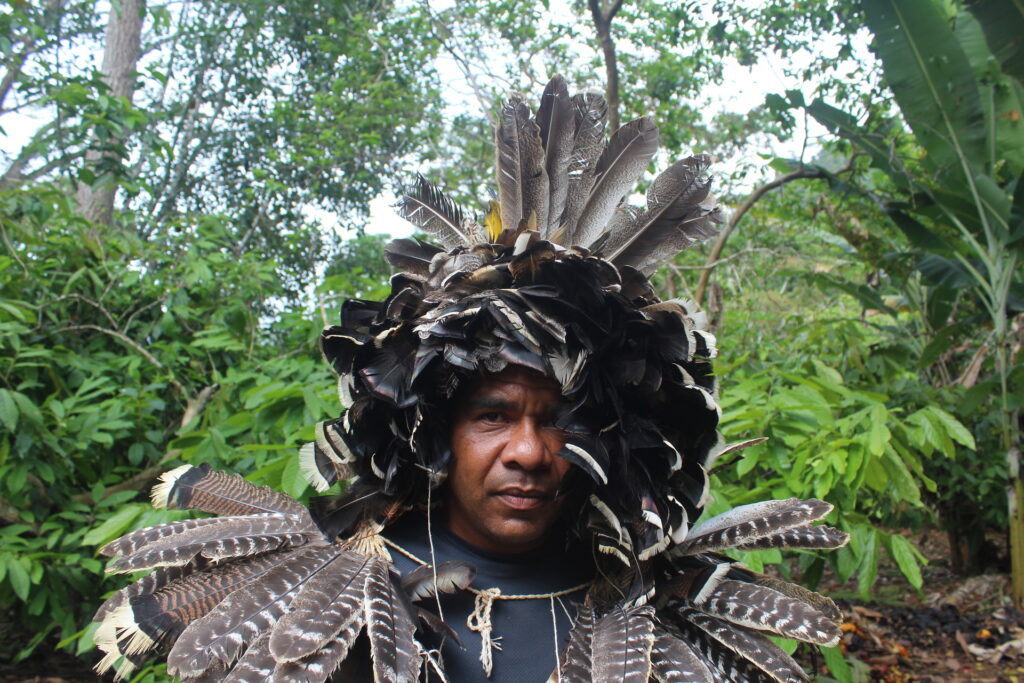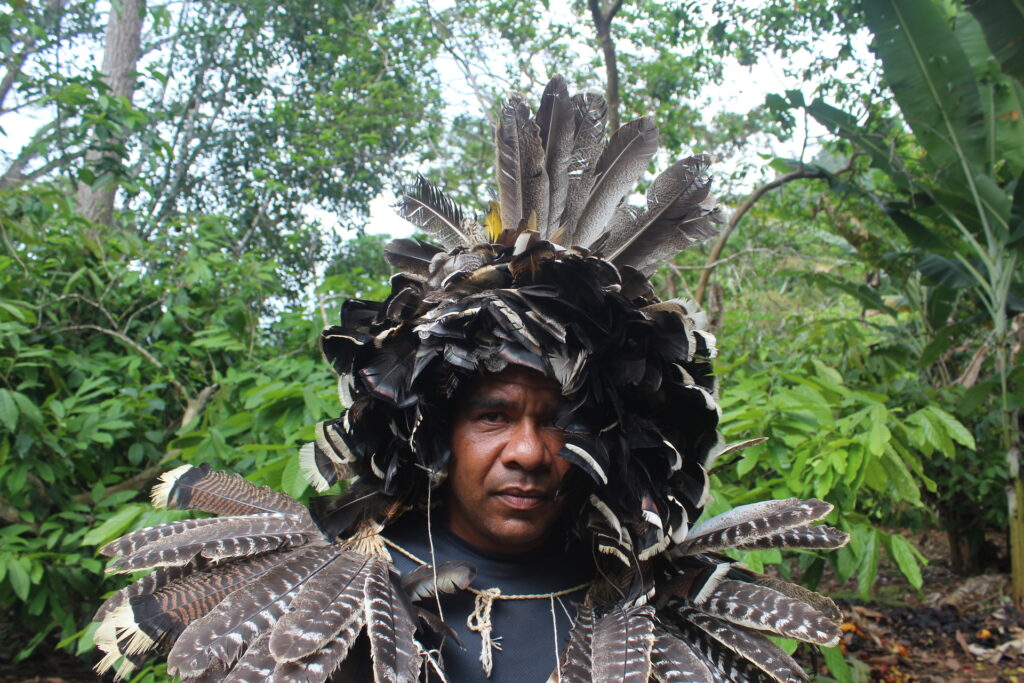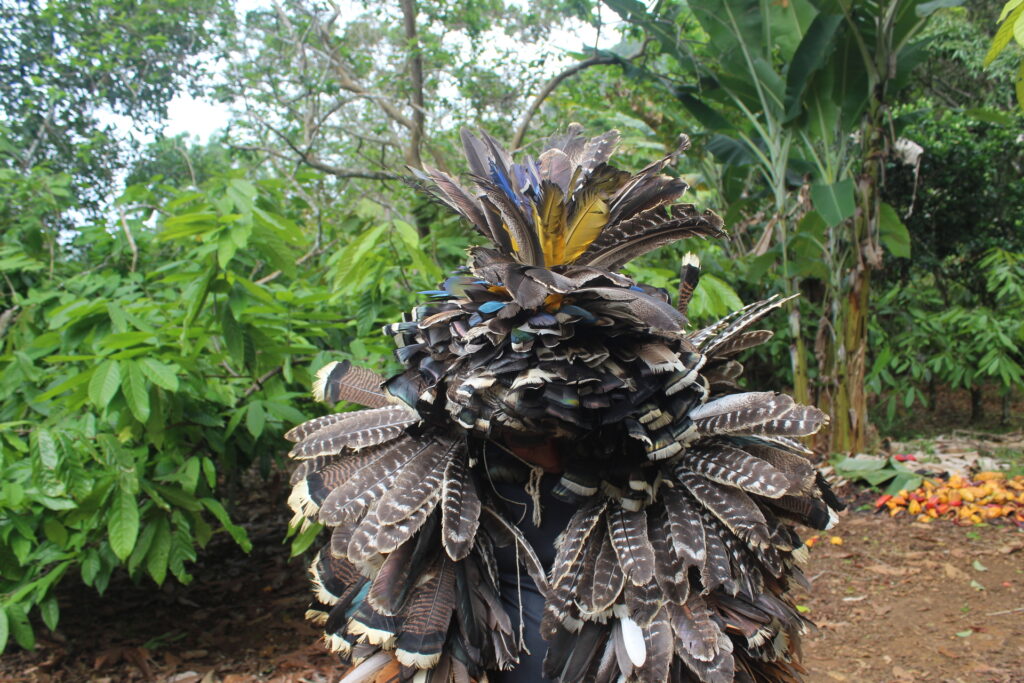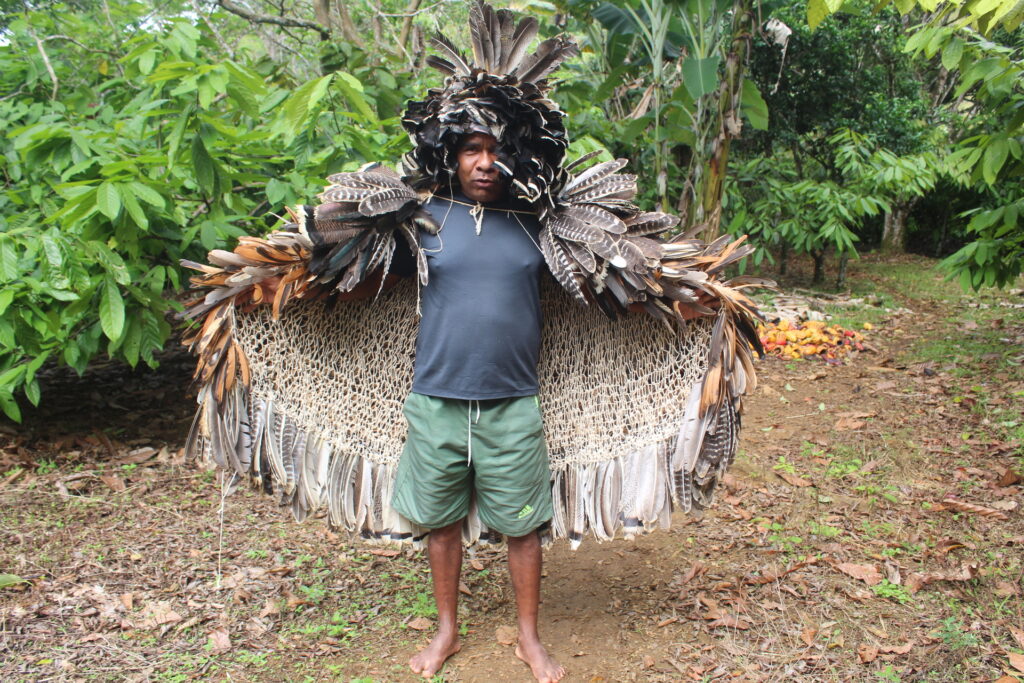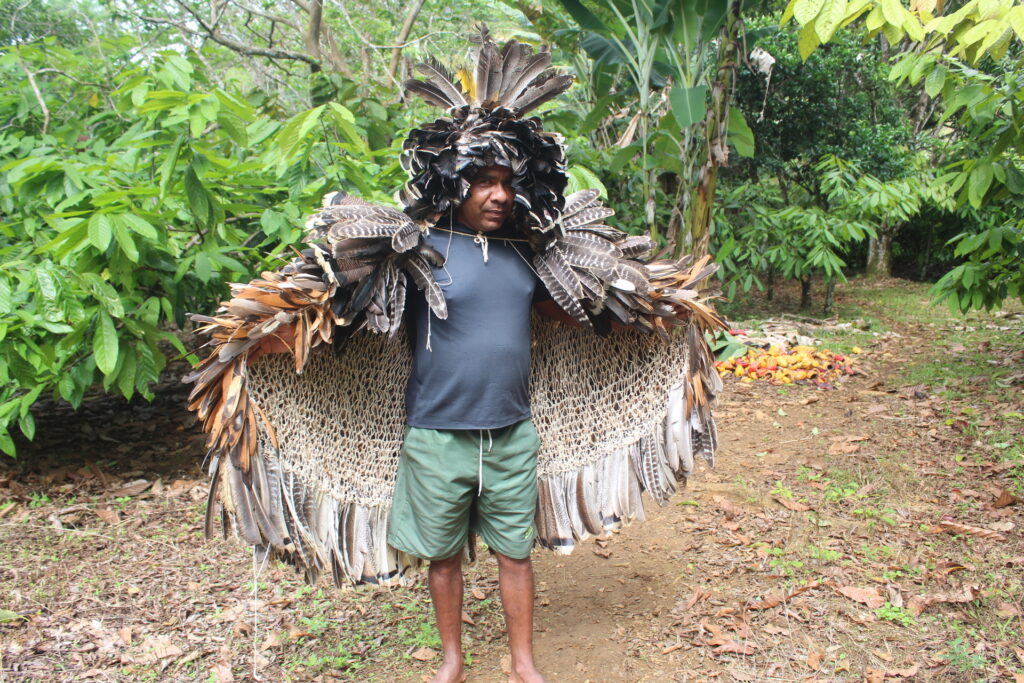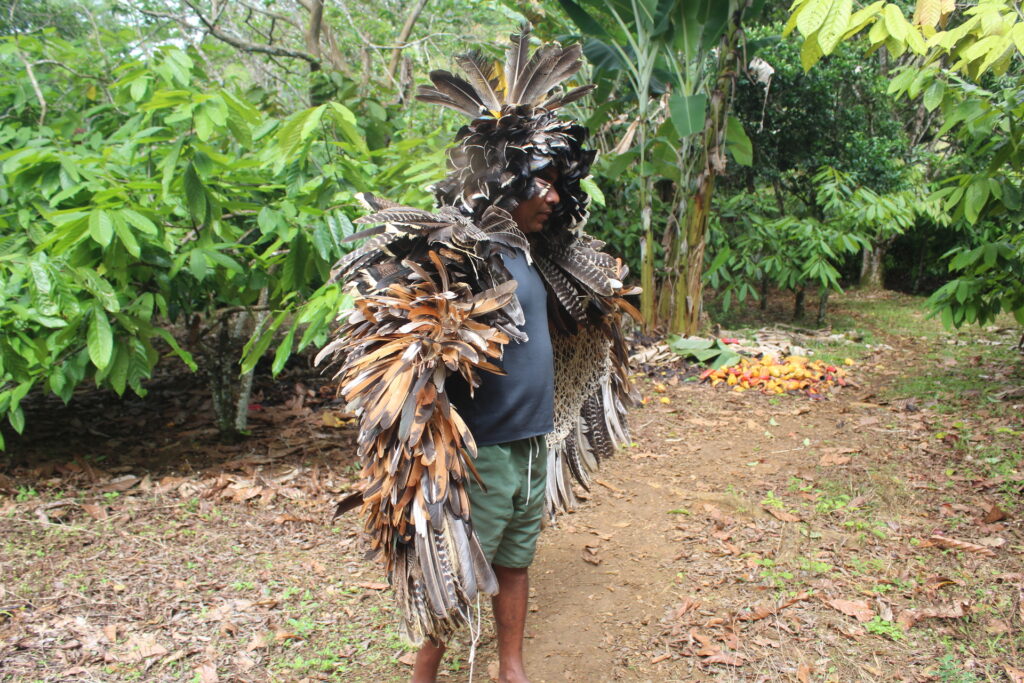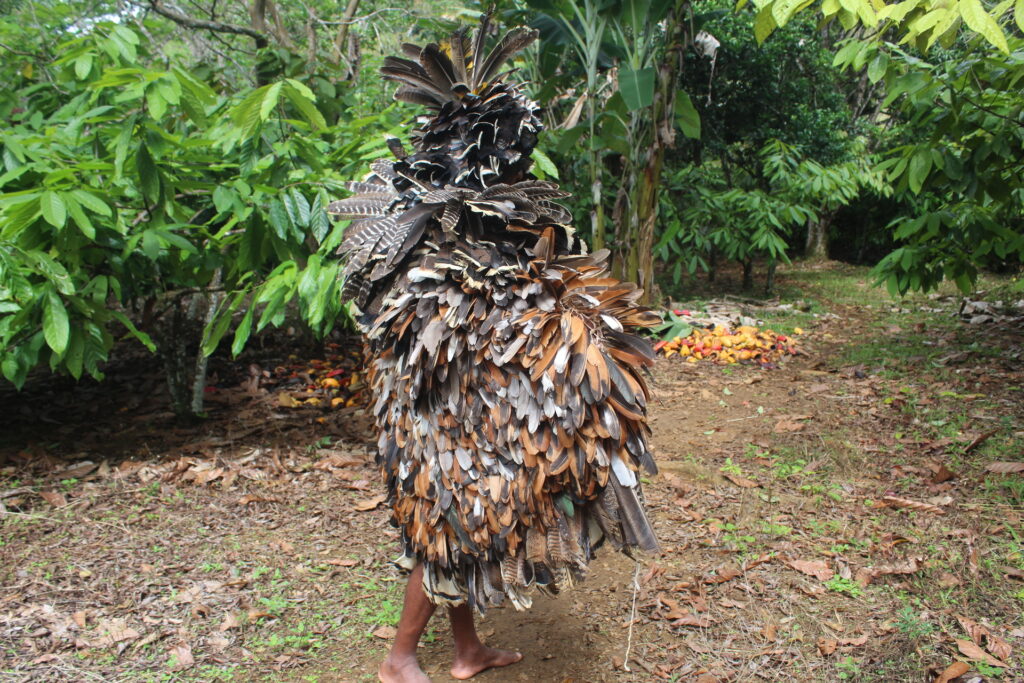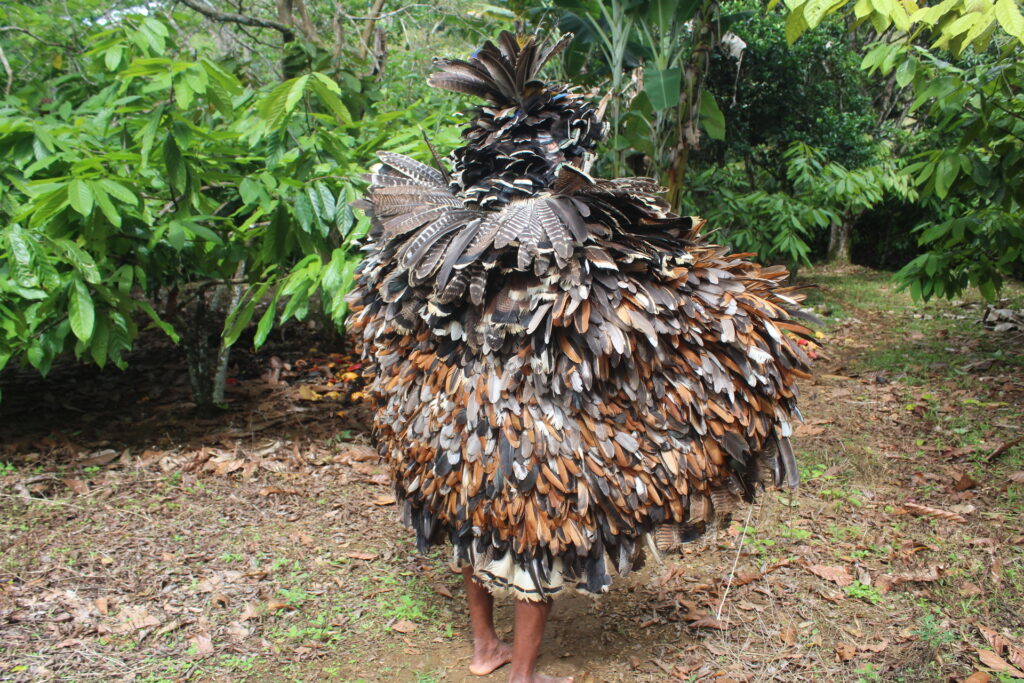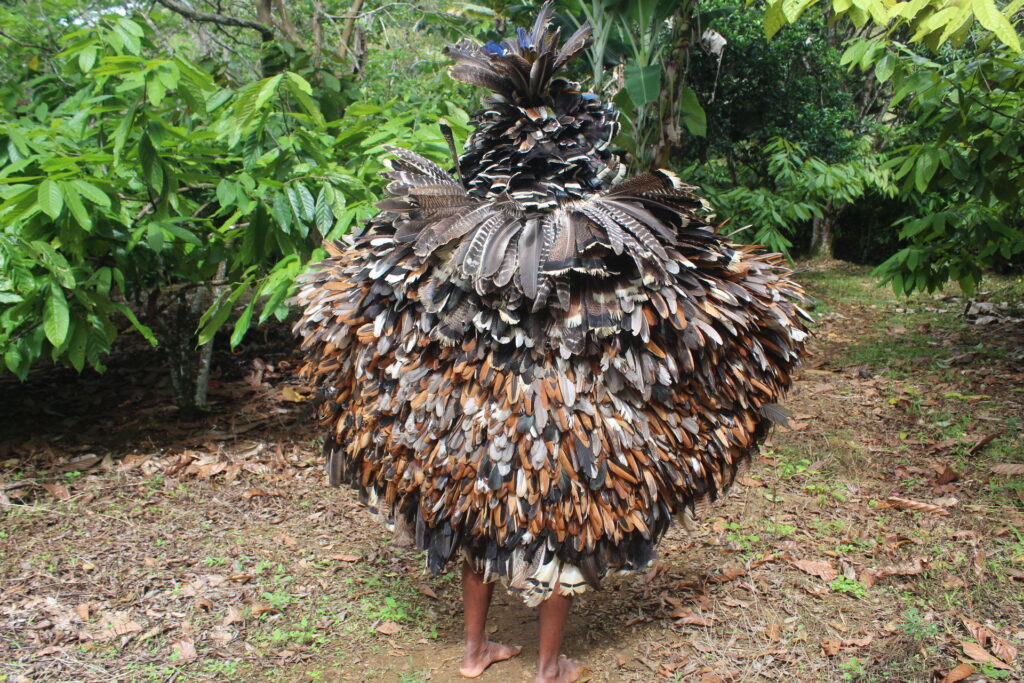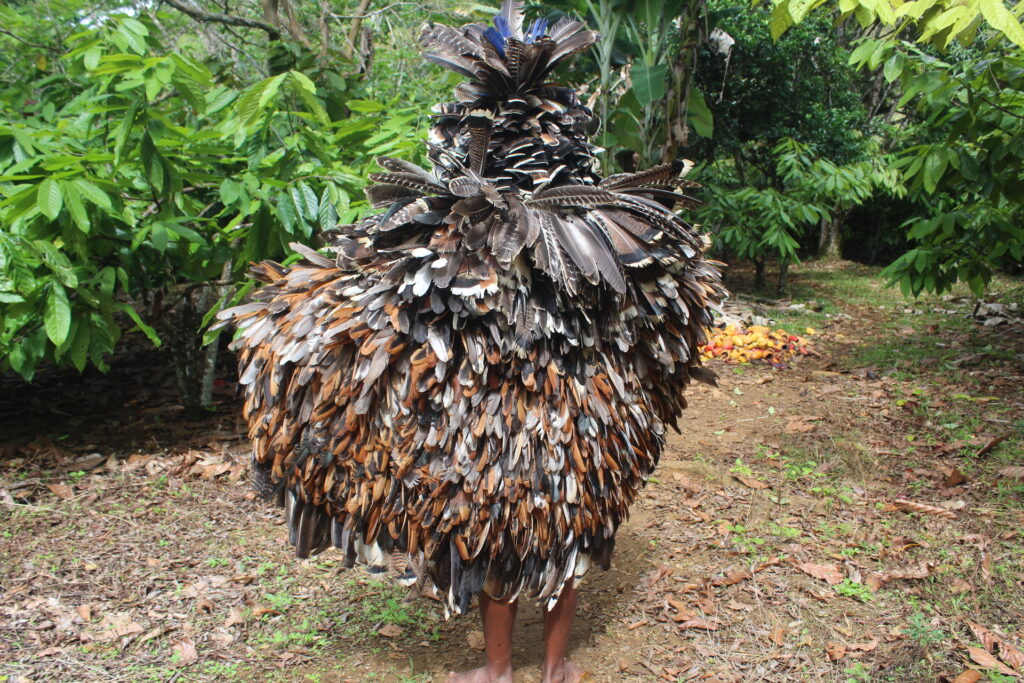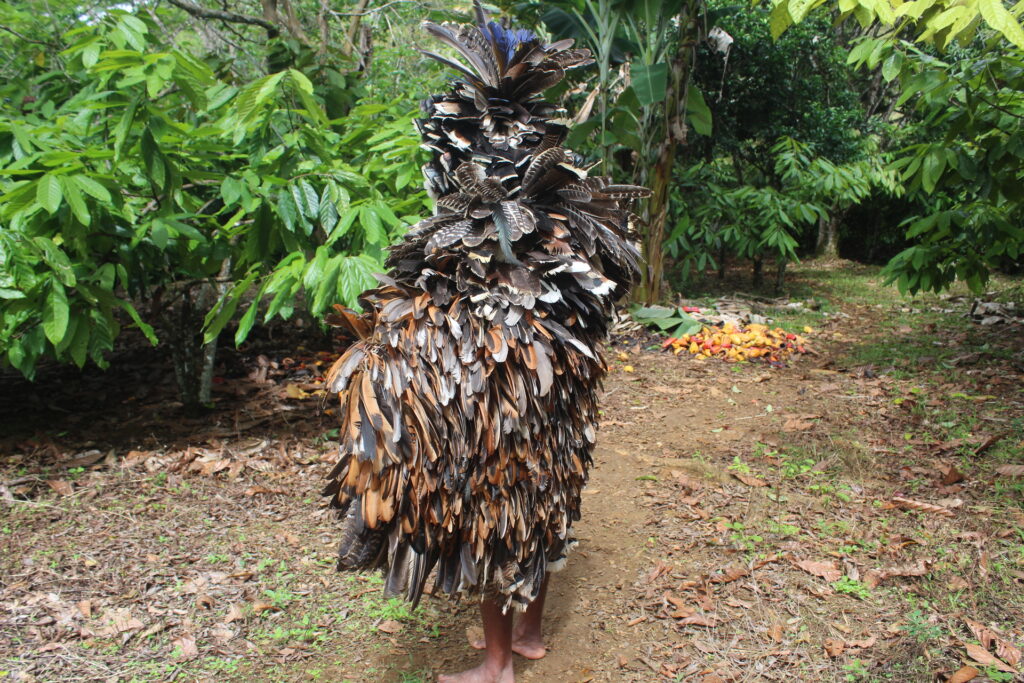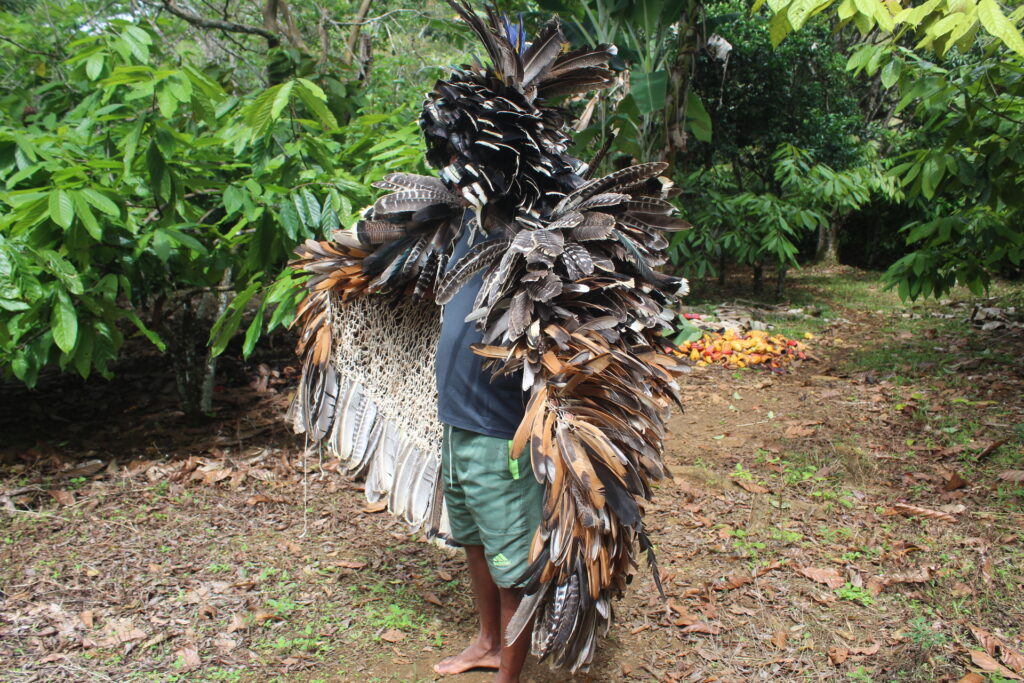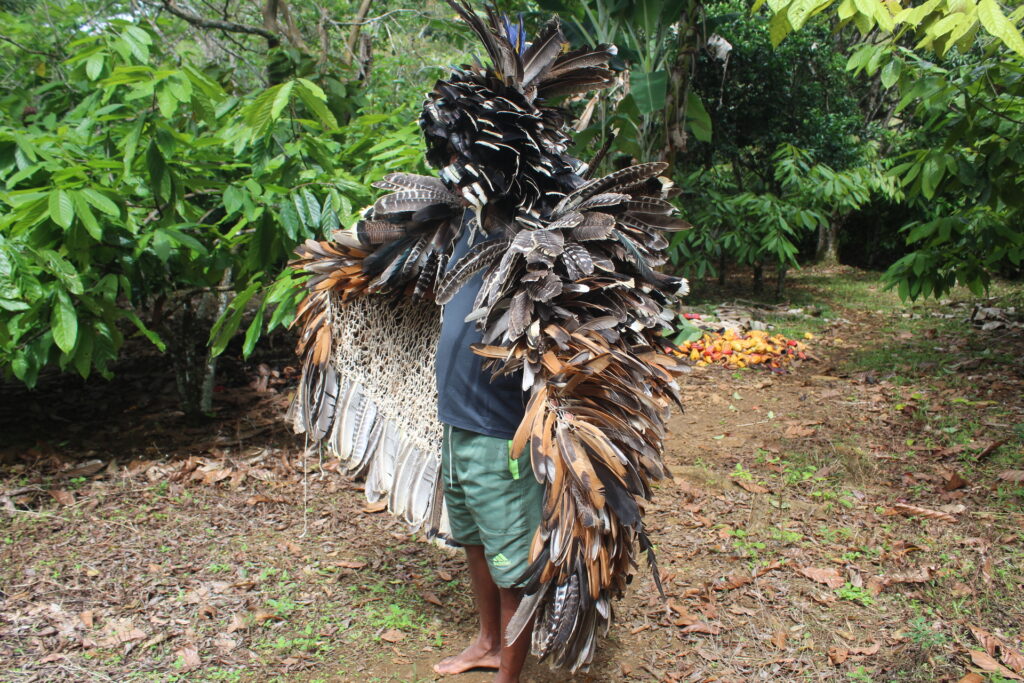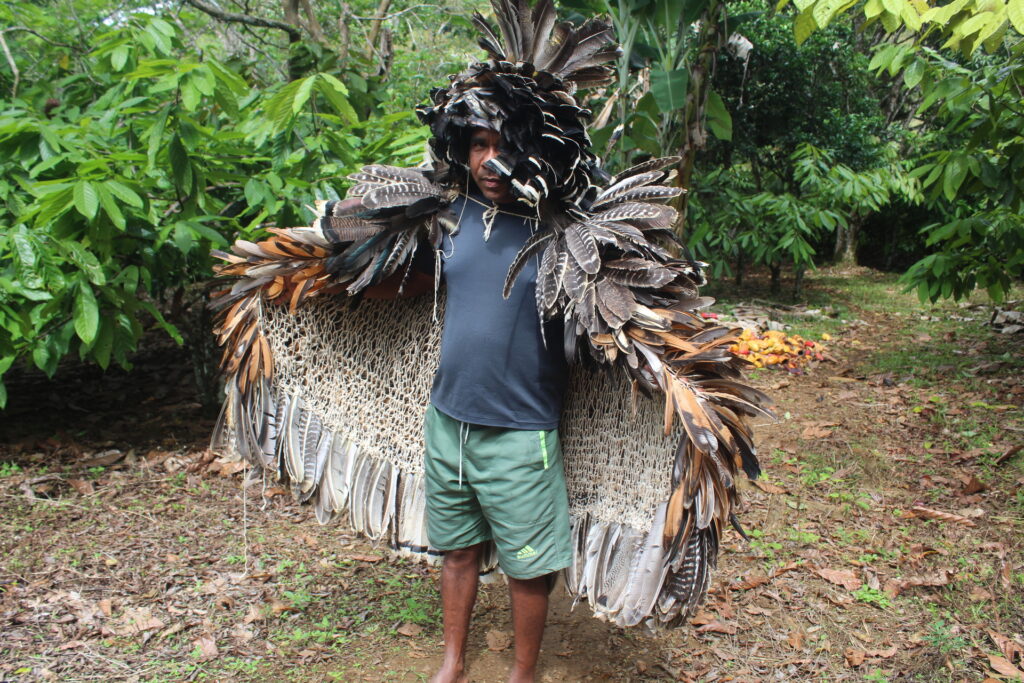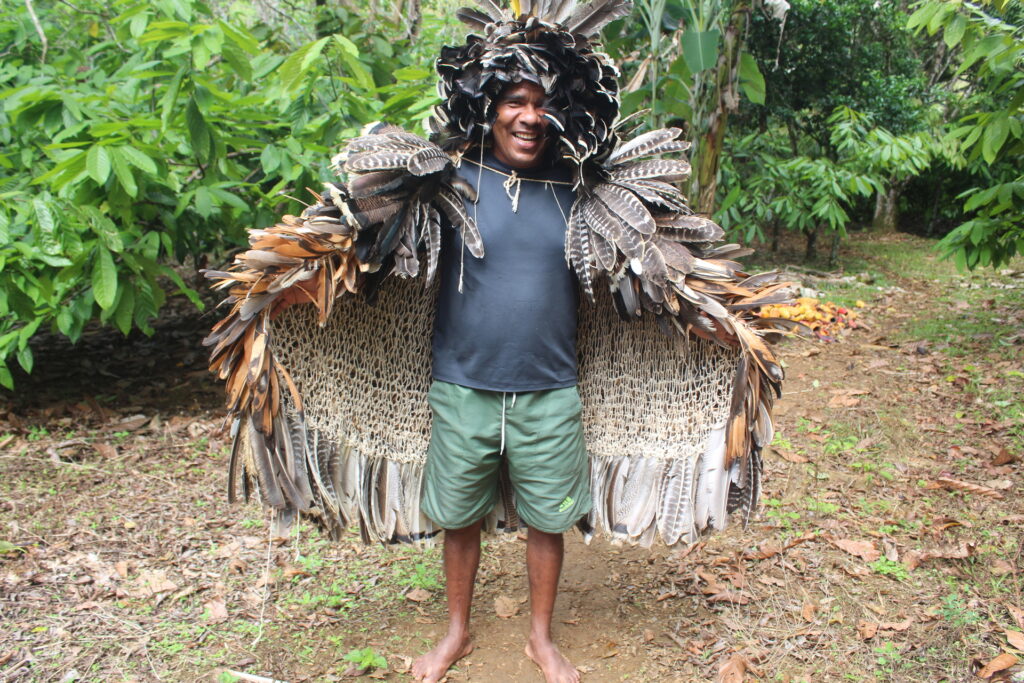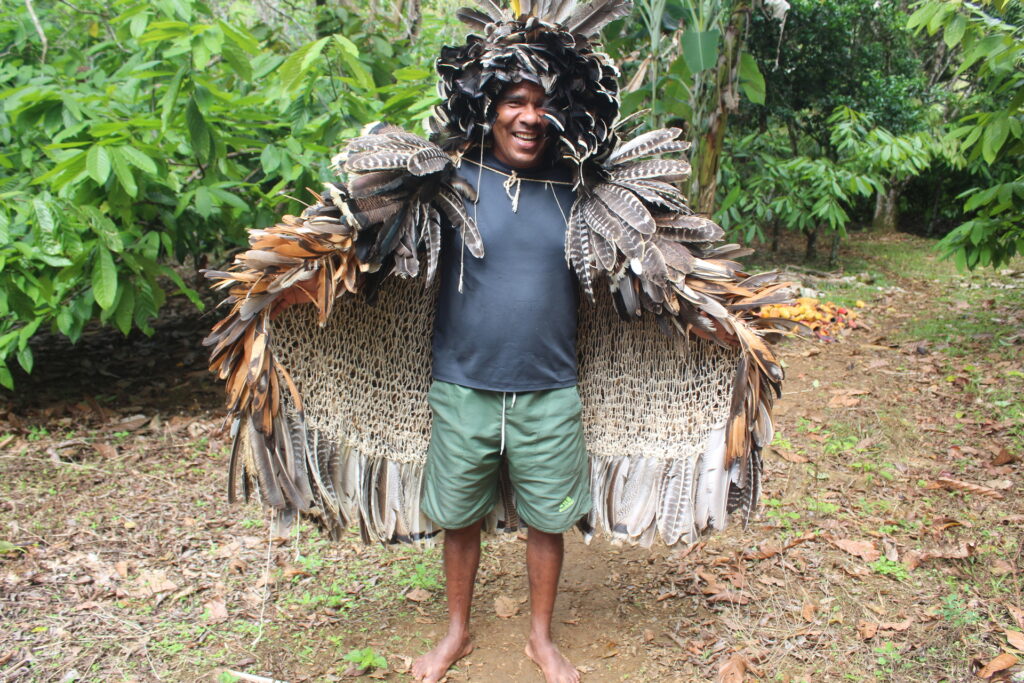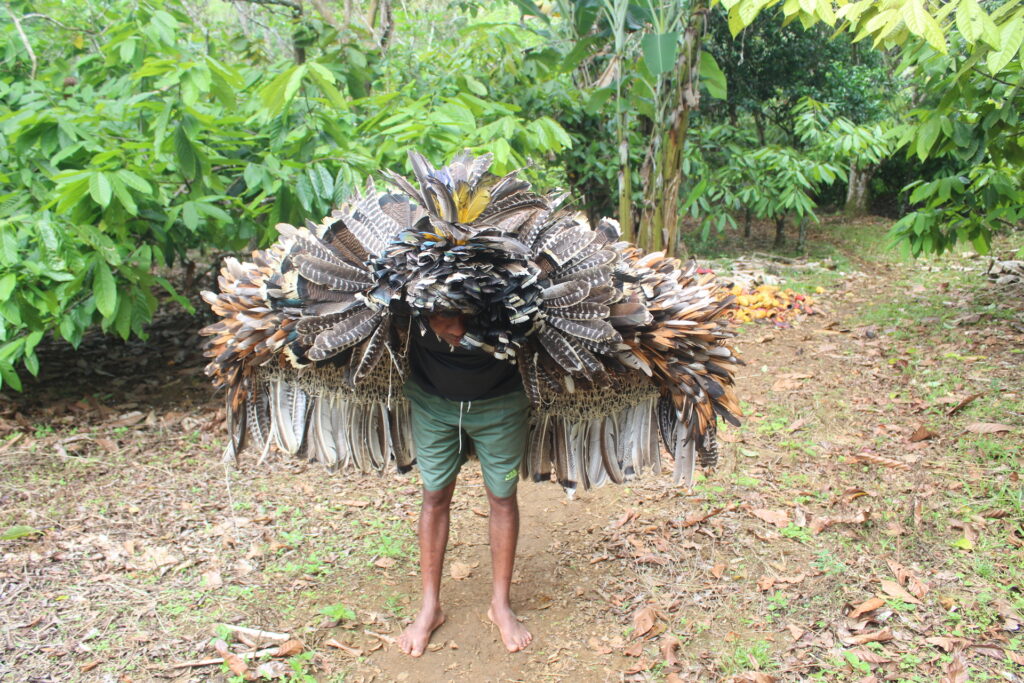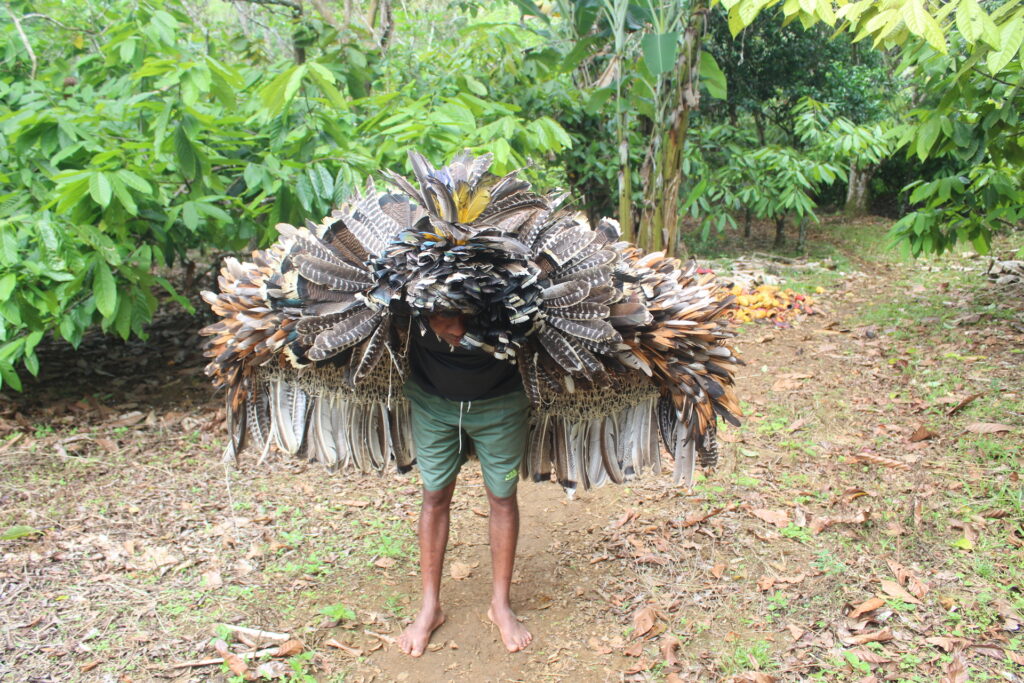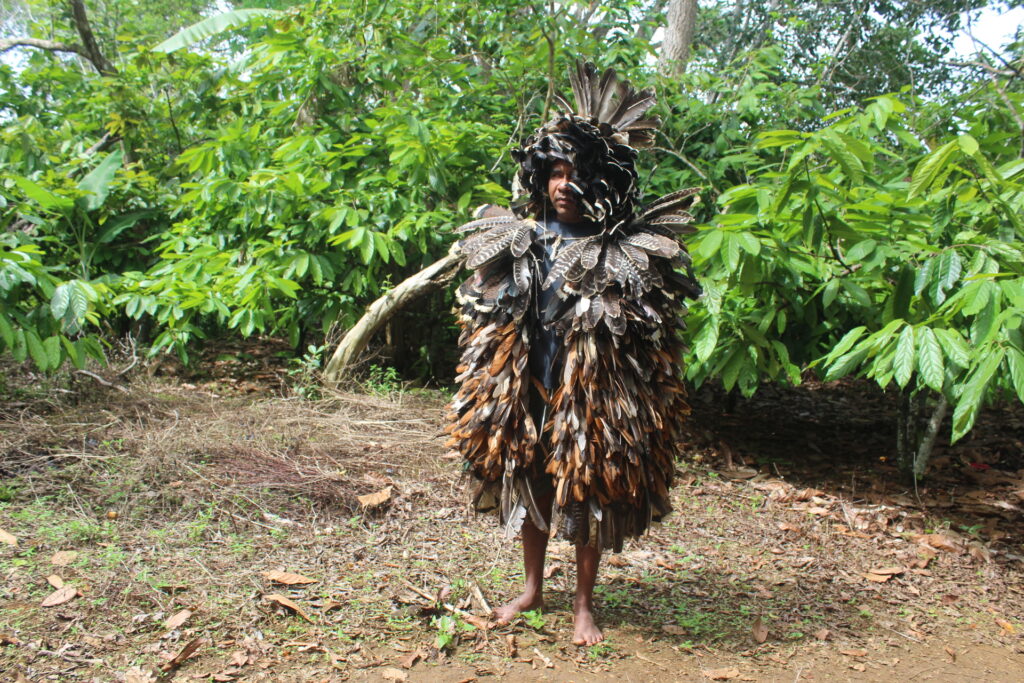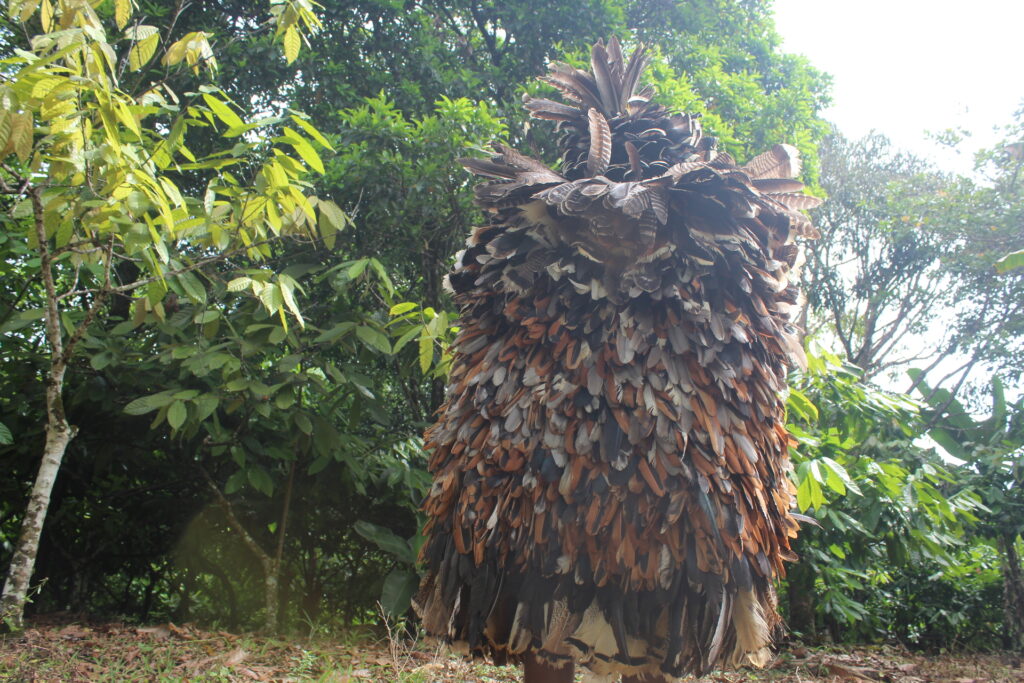The sacred Tupinambá Mantle was made between February and August of 2020, during the Covid-19 pandemic. During this period of the pandemic, there was a certain calm in the village, which allowed an internal gaze. It was thus the ideal moment to make the mantle.
It is a work inspired by a Tupinambá mantle from the sixteenth century that is conserved in the archives of the Musée du Quai Branly, in Paris, France. The mantle found in the museum is 99 centimetres tall and reaches 121 centimetres with the hood. At its widest portion (the bottom of the mantle) it measures 119 centimetres and at its narrowest (at the shoulders), it is 42 centimetres. The mantle was made from cotton, on which were placed red feathers, some with black tips.
The mantle made in 2020 continues the use of this model, beginning from a base of raw cotton thread treated with wax from the tiúba bees from the village, on which was placed approximately 3,000 feathers. The cotton base was woven with the jereré weaving technique, a fishing tool used by the elders of the village.
The mantle is composed of two parts: the cape, which is slightly rounded below, and the hood. These two parts were joined to form a single piece. This mantle is 88 centimetres tall and 121 centimetres with the hood. The lower portion (the broadest part) is 120 centimetres wide and the upper extremity (the shoulders), 47 centimetres wide. Although it was based on the measurements of the mantle in France, the measurements were adjusted for it to be used by the cacique [chief] of our village, cacique Babau (Rosivaldo Ferreira da Silva).
The newly produced mantle has approximately 3,000 feathers, with 2,500 on the cape. The colour is predominantly brown, it is composed of feathers from birds native to the region, and those found in the village: chickens, hawks, ducks, turkey, pheasant, tururim, sabiá-bico-de-osso, canário-da-mata, gavião-rei, gavião-perdiz and arará (on the hood).
The center of the hood has a jequitibá seed.
For us, the Tupinambá people, the mantle represents the revitalization of our culture, our language, our production, our techniques. The mantle has been revealing secrets. The confection of the mantle carries knowledge guarded by the Tupinambá women: weaving, braiding, the use of various utensils (mainly the needle from tucum), and preparation of the cotton thread (in the past it was done on a spindle) with bees wax. Although I made the mantle, the work involves all the people of the community, from the children to the elders who helped look for feathers, collect tiúba bees wax, and elders of the community taught weaving techniques.
The production of the mantle thus revived many memories. The mantle has its own language, its own personality. It reveals to us a form of camouflage, of hiding, of being able to go unnoticed in the forest. Cacique Babau said that when he wears the mantle he is camouflaged and feels like an owl. For us, the owl represents the eyes of night. It is the guardian of the night. A very strong symbol.
It is interesting to compare a work that is frozen in a museum, and see the piece with life and movement – in this case, to see the mantle being used by a member of the community, the cacique, during a ritual. It is a very strong emotion. Ory, my youngest son, said that, when the cacique uses the mantle, it will allow curing the world, warding off all disease. Everything bad will be eliminated, because the cacique will be transformed into a super-hero.
Making the mantle thus also has a strong political significance. We know that there are Tupinambá mantles in various places and that we have difficulty to gain access to them. Until now, we have had access to only one mantle, the one mentioned that is in the Musée du Quai Branly, in France. It was essential to have access to this mantle so that it could speak to me. The mantle was able to open up to me and I was able to make my observations and have some perceptions so that I could make another mantle. It was important to bring life to the mantle and show that it is not an obsolete object, stored in a corner, just to be seen and deteriorate with time. The mantles have a life and a purpose within their people. This is the return of the mantle.
